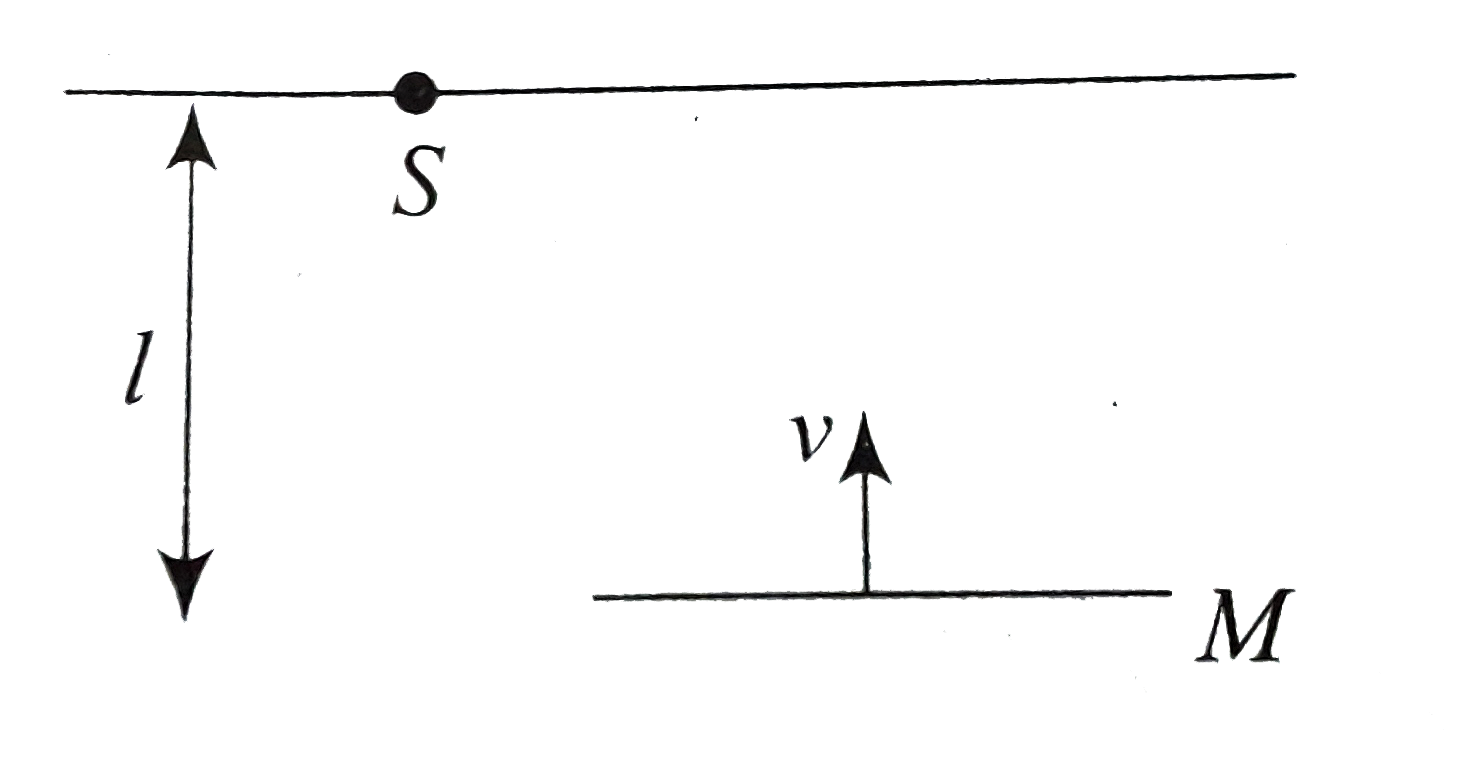A plane mirror M is arranged parallel to a wall W at a distance l from it. The light produced by a point source S kept on the wall is reflected by the mirror and produces a patch of light on the wall. The mirroo moves with velocity v towards the wall.
Which of the following statement(s) is/are correct? 
The patch of light will move with the speed v on the wall.
The patch of light will not move on the wall.
As the mirror comes closer the patch of light will become larger and shift away from the wall with speed large than v .
The widht of the light patch on the wall remains the same.
The correct Answer is:b,d

Here, sp=PA and SQ=QB
so, position of A and B dcedn't depend on separation of mirror from the eall so, the patch AB will not move on the wall ∴ SA and SB are constant
So, AB = constant.
Topper's Solved these Questions
- GEOMATRICAL OPTICS BOOK - RESONANCE ENGLISHCHAPTER - GEOMATRICAL OPTICS EXERCISE - Exercise-3
80 Videos
- GEOMATRICAL OPTICS BOOK - RESONANCE ENGLISHCHAPTER - GEOMATRICAL OPTICS EXERCISE - Advance level Problems
35 Videos
- GEOMATRICAL OPTICS BOOK - RESONANCE ENGLISHCHAPTER - GEOMATRICAL OPTICS EXERCISE - Exercise-1
141 Videos
- EXPERIMENTAL PHYSICSBOOK - RESONANCE ENGLISHCHAPTER - EXPERIMENTAL PHYSICSEXERCISE - PART -II
10 Videos
- GRAVITATIONBOOK - RESONANCE ENGLISHCHAPTER - GRAVITATIONEXERCISE - HIGH LEVEL PROBLEMS
16 Videos
Similar Questions
Figure shows a torch sending a parallel beam of light fixed on a wall and a plane mirror which forms a spot on the wall. As the mirror moves towards the wall, the spot on the wall moves

View SolutionWhich of the following equation is correct in the context of kohlarusch 's law
View SolutionIn a dark room, a parallel beam of light falls on a plane mirror and another parallel beam of light falls on a white wall. The light reflected by the mirror can be seen only in a certain direction, but the reflected light from the wall can be seen from anywhere. Give reason.
View SolutionOn a particle moving on a circular path with constant speed v, light is thrown from a projectors placed at the centre of the circular path. The shadow of the particle is formed on the wall. The velocity of shadow up the wall is

View SolutionA point source of light S is placed on the major optical axis of the concave mirror at a distance of 60 cm. At what distance from the concave mirror should a flat mirror be placed for the rays to converge again at the point S having been reflected from the concave mirror and then from the flat one? Will the position of the point where the rays meet change if they are first reflected from the flat mirror? The radius of the concave mirror is 80 cm.
View SolutionA mirror and a source of light are situated at the origin O and at a point on OX, respectively. A ray of light from the source strikes the mirror and is reflected. If the direction ratios of the normal to the plane are 1,−1,1, then find the DCs of the reflected ray.
View SolutionA light ray I is incident on a plane mirror M.The mirror is rotated in the direction as shown in the figure by an arrow at frequency 9πrev/sec,The light reflected by the mirror is received on the wall W at a distance 10mfrom the axis of rotation .When the angle of incidence becomes 37∘find the speed of the spot (a point) on the wall?

View SolutionA particle of mass m moving at a velocity v strikes with the wall at an angle α with the wall and leaves ball making same angle with the wall. Choose the correct statemet (s) from the following.
View SolutionSpotlight S rotates in a horizontal plane with constant angular velocity of 0.1 rad/s The spot of light P moves along the wall at a distance of 3 m The velocity of the spot P when θ = 45 is m/s (see - fig. ) is ……….. m/s

View SolutionThere is a source of sound (a tuning fork) moving towards a reflecting wall will a speed of 30ms−1. The velocity of the sound in air is 330ms−1and the frequency of the tuning fork is 600 Hz. The observer is between the source and the wall and is moving with some velocity V1 towards the wall. The beat frequency heard by the observer is 4 Hz. If the tuning fork is waxed, the frequency beats heard by the observer becomes 3 Hz. If the new frequency of tuning fork is k then k/50 is

View Solution
